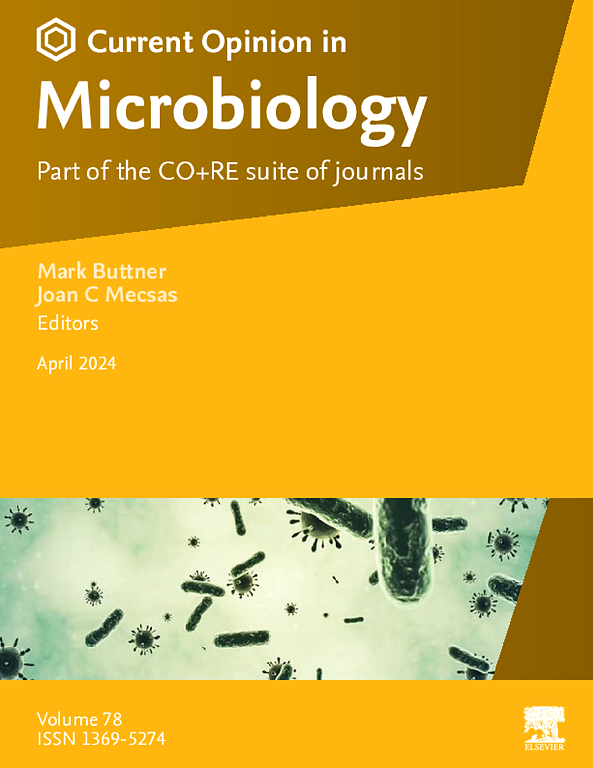驯化野生复制子:进化和驯化大型染色体外复制子
IF 7.5
2区 生物学
Q1 MICROBIOLOGY
引用次数: 0
摘要
细菌基因组通常包含染色体外复制子(er),范围从小的、可移动的质粒到大的、稳定遗传的元素,如巨质粒、次级染色体或染色粒。在大约10%的已测序细菌物种中存在多部基因组,其中包括大er,并且被认为已经进化为适应不同生态位的解决方案。了解这些复制子如何成为必不可少的基因组组成部分是表征细菌适应性和基因组可塑性的关键。大er通过进化过程在宿主基因组中建立,这些进化过程塑造了它们的遗传内容,促进了核心功能的获得,并使它们的复制和分离与细菌细胞周期同步。在这篇综述中,我们探讨了大er的起源、分类和功能作用。我们强调了共享的维护原则,如剂量依赖性基因组织,通过甲基化或检查点机制进行复制控制,以及专用分区系统或共享分离机制。来自霍乱弧菌和农杆菌的例子说明了这些机制,并提出了ER驯化的概念模型。本文章由计算机程序翻译,如有差异,请以英文原文为准。
Taming wild replicons: evolution and domestication of large extrachromosomal replicons
Bacterial genomes often contain extrachromosomal replicons (ERs), ranging from small, mobile plasmids to large, stably inherited elements, such as megaplasmids, secondary chromosomes, or chromids. Multipartite genomes, which include large ERs, are present in approximately 10% of sequenced bacterial species and are thought to have evolved as adaptive solutions to diverse ecological niches. Understanding how these replicons become essential genome components is critical for characterizing bacterial adaptability and genome plasticity. Large ERs become established within the host genome through evolutionary processes that shape their genetic content, promote the acquisition of core functions, and synchronize their replication and segregation with the bacterial cell cycle. In this review, we examine the origin, classification, and functional roles of large ERs. We highlight shared maintenance principles, such as dosage-dependent gene organization, replication control via methylation or checkpoint mechanisms, and dedicated partitioning systems or shared segregation machinery. Examples from Vibrio cholerae and Agrobacterium tumefaciens illustrate these mechanisms, and a conceptual model for ER domestication is proposed.
求助全文
通过发布文献求助,成功后即可免费获取论文全文。
去求助
来源期刊

Current opinion in microbiology
生物-微生物学
CiteScore
10.00
自引率
0.00%
发文量
114
审稿时长
6-12 weeks
期刊介绍:
Current Opinion in Microbiology is a systematic review journal that aims to provide specialists with a unique and educational platform to keep up-to-date with the expanding volume of information published in the field of microbiology. It consists of 6 issues per year covering the following 11 sections, each of which is reviewed once a year:
Host-microbe interactions: bacteria
Cell regulation
Environmental microbiology
Host-microbe interactions: fungi/parasites/viruses
Antimicrobials
Microbial systems biology
Growth and development: eukaryotes/prokaryotes
 求助内容:
求助内容: 应助结果提醒方式:
应助结果提醒方式:


